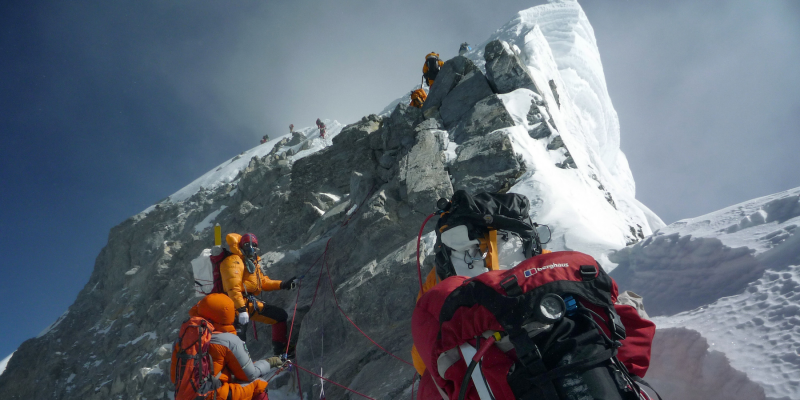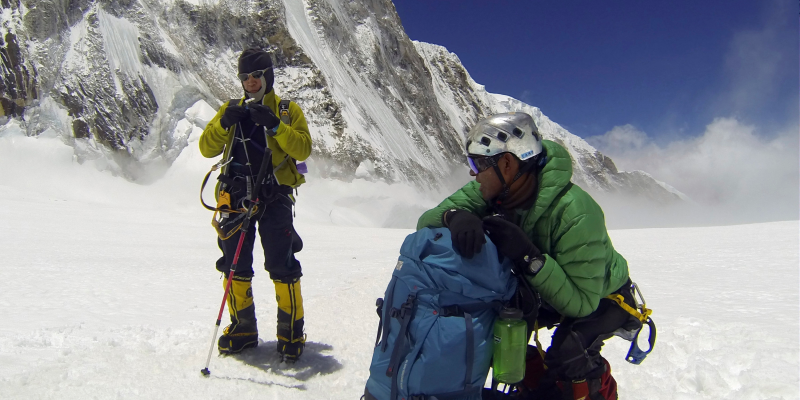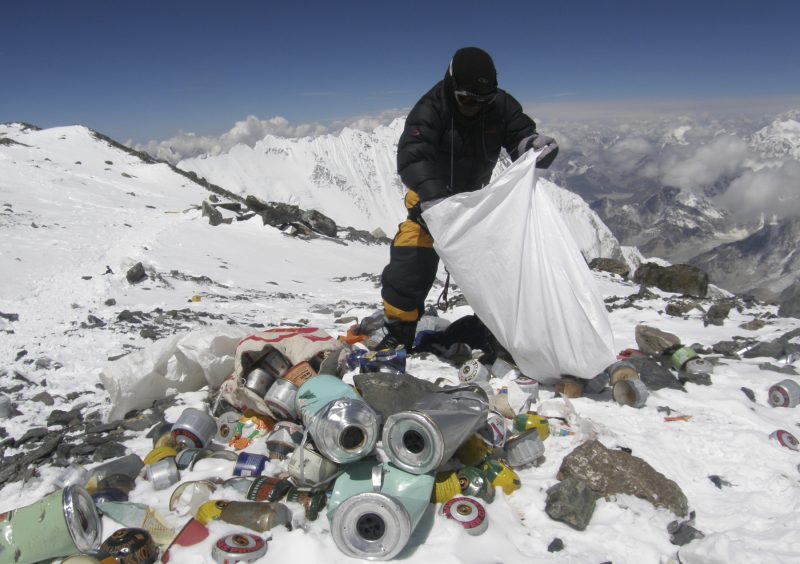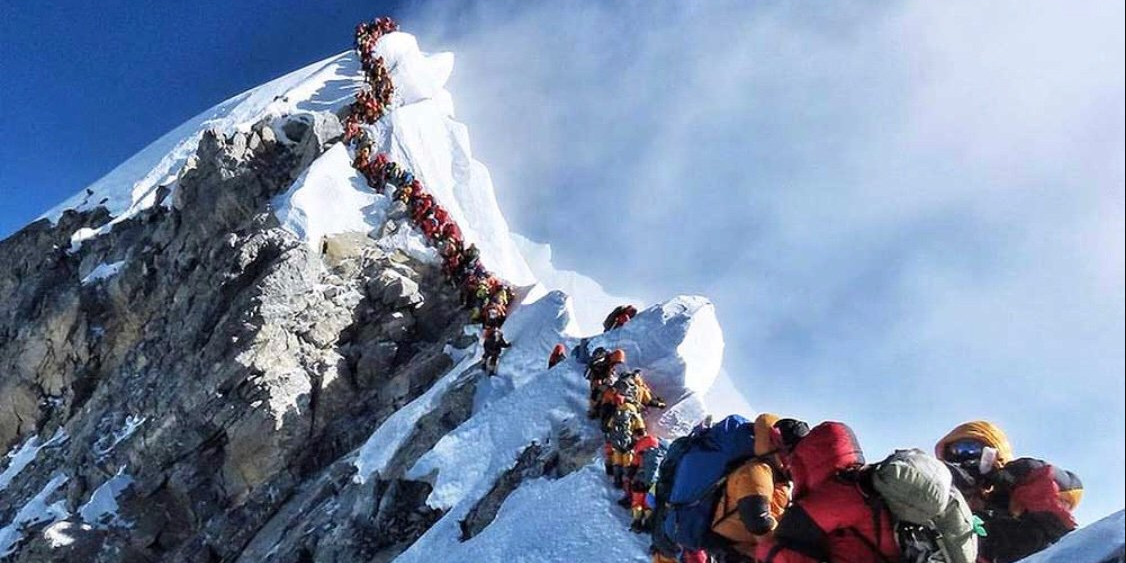- A total of 11 people have died, and one is presumed dead from scaling Mount Everest this week.
- The total death toll from the past week alone is higher than that for all of 2018. The victims were from India, Ireland, Austria, and the US.
- The deaths come amid reports of severe overcrowding at the mountain’s “death zone,” an area 26,000 feet above sea level where oxygen is so limited that the body’s cells start to die.
- There are only a certain number of days in the year where conditions are good enough for climbers can summit Everest.
- Visit INSIDER’s homepage for more stories.
At least 11 people are reported to have died on Mount Everest, taking the total death toll over the past week alone higher than that for all of 2018.
American citizen Christopher John Kulish died Monday after he reached the top of the mountain’s Nepalese side, a Nepalese official said according to Reuters.
Kulish was a 62-year-old from Boulder, Colorado who was a “member of the ‘7 Summit Club'” once he summited Everest, meaning he had “scaled the highest peak on each continent,” his family reportedly said in a statement obtained by CNN.
Robin Fisher, a 44-year-old British climber collapsed and died after summiting the mountain Saturday. The recent deaths come amid reports of overcrowding on the world’s highest mountain, where climbers are stuck waiting in a “death zone” for hours for the opportunity to reach the summit.
Fischer had warned of the danger of overcrowding in the caption of a May 19 Instagram post, in which he said: "With a single route to the summit, delays caused by overcrowding could prove fatal so I am hopeful my decision to go for the 25th will mean fewer people. Unless of course everyone else plays the same waiting game."
http://instagr.am/p/BxofaW7ljpj
Other recent victims were named as Kevin Hynes from Ireland, Ernst Landgraf from Austria, and Kalpana Das and Nihal Bagwan, both from India, according to The Guardian.
Two additional climbers from India and one from the United States have also died on Everest in the past week. A second Irish climber is presumed dead after he slipped and fell close to the summit.
A total of five people died on Everest, and one died on the nearby Lhotse mountain last year, according to the BBC.

Hynes, a 56-year-old father of two, died in his tent 7,000 meters (22,966 feet) above sea level on Friday, after having turned back before reaching the summit, The Guardian cited his climbing group 360 Expeditions as saying.
The group added that Hynes was "one of the strongest and most experienced climbers on our team," and had summited other Everest peaks in the past, according to The Guardian. He had been accompanied with an experienced Sherpa during his last summit attempt.
Das and Bagwan died of exhaustion while scaling back down the mountain on Thursday, the BBC reported. It's not clear if they were on the same expedition.
Bagwan died of "dehydration, exhaustion and tiredness after being caught in the jam of climbers," Reuters cited the Peak Promotion hiking agency, which had handled the climber's logistics, as saying.
It's not clear how Landgraf died. The BBC reported that a 65-year-old Austrian died on the northern Tibet side of the mountain, but did not name them.
Séamus Lawless, a professor at Ireland's Trinity College, is presumed dead after falling from the mountain on May 16, though a recovery operation remains underway, the BBC and The Guardian reported.

Donald Lynn Cash, a 55-year-old from Utah, and 54-year-old Anjali S Kulkarni from Mumbai died last Wednesday, as reported by The Kathmandu Post.
Cash died on the summit after losing energy while waiting to climb up there, and "collapsed as soon as he reached the summit," the Post reported. He was helped down by two Sherpas when he collapsed again while waiting, The Guardian reported.
Kulkarni died on her way back down from Everest's summit, the Post said.

The 'death zone'
Expedition companies blamed Cash and Kulkarni's deaths on exhaustion after lining up for hours in the "death zone" to summit Everest.
The death zone is an area more than 8,000 meters (26,000 feet) above sea level, where oxygen is so limited that the body's cells start to die, INSIDER's Will Martin and Sinéad Baker reported.
Prolonged time above 8,000 meters can lead to serious health issues, and even death.
Climber Nirmal Purja, who earlier this week took a photo of the severe overcrowding on Everest (which can be seen at the top of this post), told The New York Times: "I have had bottlenecks on mountains before but not this many people at such high altitude."
Read more: One stunning picture shows why climbers are dying on Mount Everest
There are only a certain number of days in the year where conditions are good enough for climbers can summit Everest. Climbers can wait for the opportunity for weeks, and then collectively rush to the top, INSIDER reported.
Jamling Tenzing, the son of Tenzing Norgay - the sherpa who was the first to summit Everest with Sir Edmund Hillary - said in 2003 that the mountain had "lost its spirit of adventure" because people were climbing it without the proper skill.
